
First and Only Weekly Online Fanzine Devoted to the Life & Works of Edgar Rice Burroughs
Since 1996 ~ Over 15,000 Web Pages in Archive
Volume 2101
ERB ECLECTICA
ERB-Date: 2009.11
Contents
www.ERBzine.com/eclectica


 |
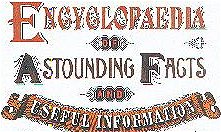 |
|
Nos. 3000-4000 |
Nos. 4000-5000 |
Nos. 5000-6000 |
|
Nos. 0000-1000 |
Nos. 1001 - 2000 |
Nos. 2000 - 3000 |
|
Reference and Research |
ILLUSTRATED BACK ISSUES GUIDE 2004 | 2005 | 2006 | 2007 | 2008 | 2009 | 2010 2011 | 2012 | 2013 | 2014 | 2015 | 2016 | 2017 2018 | 2019 | |
Index 1 Index 2 Photos 1 _ Photos 2 |
It was 97 years ago this month that the Frank Munsey-owned pulp called All-Story Magazine introduced the world to a vivid new character with an especially memorable name: Tarzan of the Apes. A book (one of its many, many editons is shown here at right) followed two years later in 1914. The jungle hero would become an icon and, like Sherlock Holmes or Dracula, he became a persistent figure of interest to film and television producers.
In 1918, Elmo Lincoln was the first to portray in him in film but Olympian Johnny Weissmuller, who swung on the vine for 12 films and 16 years, inhabited the character most successfully. Many others followed: Ron Ely was a more erudite Tarzan for 57 episodes of the 1966-1969 television series; the glowering Christopher Lambert took the character back to his feral roots in "Greystoke" in 1984; and Tony Goldwyn gave us singing Ape Man in Disney's 1999 animated hit "Tarzan."
Considering Hollywood's relentless recycling, how long before we see a new Tarzan film? Don't be surprised if next time the mythology is transferred to a setting with more special effects opportunities; we might see a spaceship crash leave an orphaned infant alone on a jungle planet with talking apes, or perhaps a post-apocalyptic Earth where the jungle is the ruins of Manhattan.
The ruler of the jungle has a pulp heritage and, just like with his loincloth, he gets very little coverage when it comes to literary academia. Even the less-judgmental scholars of pop culture don't seem to dwell on Tarzan much these days. But here in his anniversary month, I thought it would be nice to present an excerpt from one especially memorable appreciation of Tarzan and his creator, Edgar Rice Burroughs; this essay was written by Gore Vidal for Esquire magazine and published in December of 1963. I've added images from Tarzan's long swing through popular culture. -- Geoff Boucher
When I was growing up, I read all twenty-three Tarzan books, as well as the ten [John Carter, Warlord of] Mars books. My own inner storytelling mechanism was vivid. At any one time, I had at least three serials going as well as a number of old faithful reruns. I used Burroughs as a source of raw material. When he went to the center of the earth a la Jules Verne (much too fancy a writer for one’s taste), I immediately worked up a thirteen-part series, with myself as lead, and various friends as guest stars. Sometimes I used the master’s material, but more often I adapted it freely to suit myself. One’s daydreams intended to be Tarzanish post-puberty (physical strength and freedom) and Martian post-puberty (exotic worlds and subtle combinaziones to be worked out). After adolescence, if one’s life is sufficiently interesting, the desire to tell oneself stories diminishes. My last serial ran into sponsor trouble when I was in the Second World War and was never renewed.
Until recently I assumed that most people were like myself: daydreaming ceases when the real world becomes interesting and reasonably manageable. Now I am not so certain. Pondering the life and success of Burroughs leads one to believe that a good many people find their lives so unsatisfactory that they go right on year after year telling themselves stories in which they are able to dominate their environment in a way that is not possible in this overorganized society.
“Most of the stories I wrote were the stories I told myself just before I went to sleep,” said Edgar Rice Burroughs, describing his own work. He is a fascinating figure to contemplate, an archetype American dreamer. Born 1875, in Chicago, he was a drifter until he was thirty-six. Briefly, he served in the U.S. Cavalry; then he was a gold miner in Oregon, a cowboy in Idaho, a railroad policeman in Salt Lake City; he attempted several businesses that failed. He was perfect in the old-American grain: The man who could take on almost any job, who liked to keep moving, who tried to get rich quick, but could never pull it off.
"And while he was drifting through the unsatisfactory real world, he consoled himself with an inner world where he was strong and handsome, adored by beautiful women and worshipped by exotic races. Burroughs might have gone to his death, an unknown daydreamer, if he had not started reading pulp fiction. He needed raw material for his own inner serials and once he had used up his favorite source, Rider Haggard, he turned to magazines. He was appalled at how poor the stories were. They did not compare with his own imaginings. He was like a lover of pornography who, unable to find works which excite him, turns to writing them. Burroughs promptly wrote a serial about Mars and sold it to Munsey’s. His fellow daydreamers recognized a master.
In 1914 he published his first book, "Tarzan of the Apes" (Rousseau’s noble savage reborn in Africa), and history was made. To date the Tarzan books have sold over twenty-five million copies in fifty-six languages. There is hardly an American male of my generation who had not at one time or another tried to master the victory cry of the great ape at one time or bellowed forth from the androgynous chest of Johnny Weissmuller, while a thousand arms and legs were broken by attempts to swing from tree to tree in the backyards of the republic. Between 1914 and his death in 1950, Burroughs, the squire of Tarzana, California (a prophet honored by his own land), produced over sixty books, while enjoying the unique status of being the first American writer to be a corporation. Burroughs is said to have been a pleasant, unpretentious man who liked to ride and play golf. Not one to disturb his own unconscious with reality, he never set foot in Africa.
With a sense of recapturing childhood, I have just reread several Tarzan books. It is fascinating to see how much one recalls after a quarter century. At times the sense of déjà vu is overpowering. It is equally interesting to discover that one’s memories of Tarzan of the Apes are mostly action scenes. The plot had slipped one’s mind. It is a lot of plot, too. The beginning is worthy of Conrad. “I had this story from one who had no business to tell it to me, or to any other. I may credit the seductive influence of an old vintage upon the narrator for the beginning of it, and my own skeptical incredulity during the days that followed for the balance of the strange tale.” It is 1888. The young Lord and Lady Greystoke are involved in a ship mutiny (“there was in the whole atmosphere of the craft that undefinable something which presages disaster”). They are put ashore on the west coast of Africa. They build a tree house. Here Burroughs is at his best. He tells you the Tarzan disney size of the logs, the way to hang a door when you have no hinges, the problems of roofing. All his books are filled with interesting details on how things are made. The Greystokes have a child. They die. The “man-child” is taken up by Kala, a Great Ape, who brings him up as a member of her tribe of apes. Burroughs is a rather vague anthropologist. His apes have a language. They are carnivorous. They can, he suspects, mate with human beings. Tarzan grows up as an ape; he kills his first lion (with a full nelson); he teaches himself to read and write English by studying some books found in the cabin. The method he used, sad to say, is the currently fashionable “look-see.” Though he can read and write, he cannot speak any language except that of the apes. He gets on well with the animal kingdom, with Tantor the elephant, Ska the vulture, Numa the lion (Kipling has added grist to the Burroughs dream mill). Then white people arrive: Professor Archimedes Q. Porter and his daughter Jane. Also, a Frenchman named D’Arnot who teaches Tarzan to speak French, which is confusing. By coincidence, Jane’s suitor is the current Lord Greystoke, who thinks the Greystoke baby is dead. Tarzan saves Jane from an Ron Ely as Tarzan ape. Then he puts on clothes and goes to Paris where he drinks absinthe. Next stop, America. In Wisconsin, he saves Jane Porter from a forest fire; then he nobly gives her up to Lord Greystoke, not revealing the fact that he is the real Lord Greystoke. Fortunately, in the next volume, "The Return of Tarzan," he marries Jane and they live happily ever after in Africa, raising a son John, who in turn grows up and has a son. Yet even as a grandfather, Tarzan continues to have adventures with people a foot high, with descendants of Atlantis, with the heirs of a Roman legion who think that Rome is still a success. All through these stories one gets the sense that one is daydreaming, too. Episode follows episode with no particular urgency. Tarzan is always knocked on the head and taken captive; he always escapes; there is always a beautiful princess or high priestess who loves him and assists him; there is always a loyal friend who fights beside him, very much in the Queequeg tradition which Leslie Fielder assures us is the urning in the fuel supply of the American psyche. But no matter how difficult the adventure, Tarzan, clad only in a loincloth with no Greystoke weapon save a knife (the style is contagious), wins against all odds and returns to his shadowy wife.
These books are clearly for men. I have yet to meet a woman who found Tarzan interesting: no identification, as they say in series-land.
Stylistically, Burroughs is—how shall I put it?—uneven. He has moments of ornate pomp, when the darkness is “Cimmerian”; of redundancy, “she was hideous and ugly”; of extraordinary dialogue: “Name of a name,” shrieked Rokoff. “Pig, but you shall die for this!” Or Lady Greystoke to Lord G.: “Duty is duty, my husband, and no amount of sophistries may change it. I would be a poor wife for an English lord were I to be responsible for his shirking a plain duty.” Or the grandchild: “Muvver,” he cried, “Dackie doe? Dackie doe?” “Let him come along,” urged Tarzan. “Dare!” exclaimed the boy turning triumphantly upon the governess, “Dackie do doe yalk!” Burroughs’ use of coincidence is shameless even for a pulp writer. In one book he has three sets of characters shipwrecked at exactly the same point on the shore of Africa. Even Burroughs finds this a bit much. “Could it be possible [muses Tarzan] that fate had thrown him up at the very threshold of his beloved jungle?” It was possible, or course; anything can happen in a daydream.
Though Burroughs is innocent of literature and cannot reproduce human speech, he does have a gift very few writers of any kind possess: he can describe action vividly...
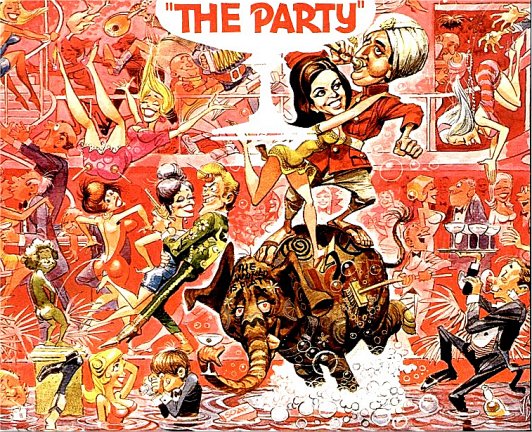
Jack Davis cover art for THE PARTY starring Peter Sellers and Denny "Tarzan" Miller |
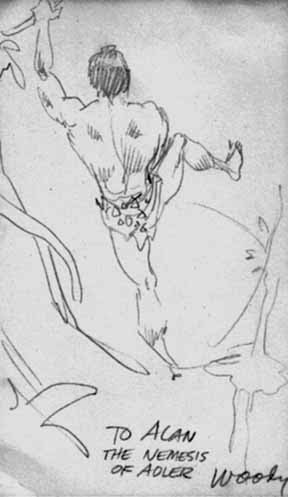
Tarzan sketch by Wally Wood |
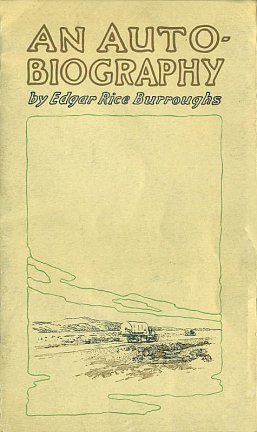
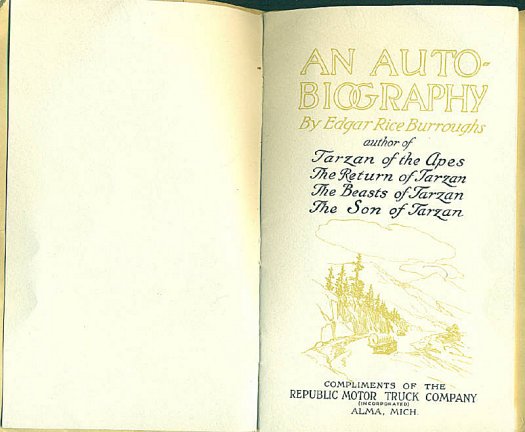
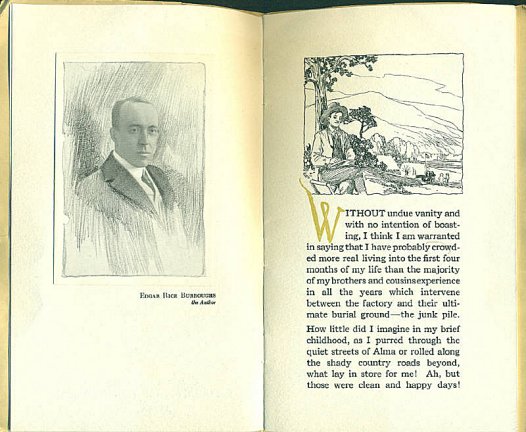
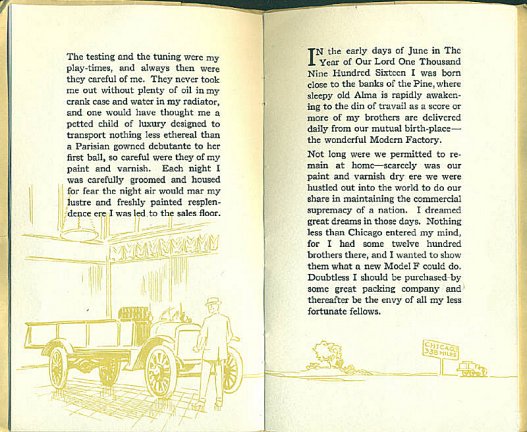
GEORGE WILSON ART
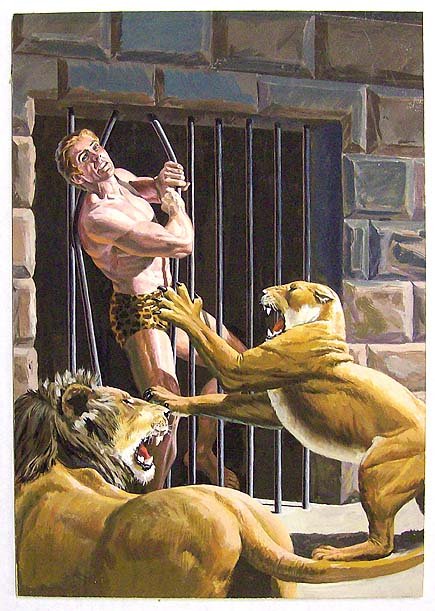
George Wilson art for the cover of KORAK SON
OF TARZAN #14 - Sep 1966 - Gold Key
George Wilson was illustrating books and men’s magazines
when he broke into the comics field during the late 1950s.
He worked almost exclusively for Dell, then Gold Key,
providing cover paintings for such comic titles as
BORIS KARLOFF TALES OF MYSTERY, BUCK ROGERS, DOCTOR
SOLAR, FIREBALL XL5,
FLASH GORDON, KORAK, PHANTOM, MAGNUS ROBOT FIGHTER,
LOST IN SPACE,
TARZAN, TWILIGHT ZONE, TUROK SON OF STONE and many
others.
MIKE HOFFMAN ERB ART
(click for larger images)
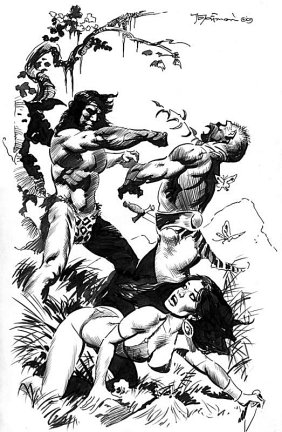
Korak Strikes |
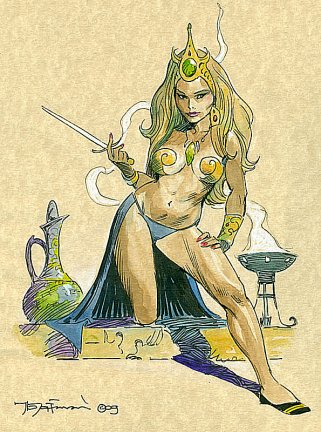
Thuvia's Dagger |
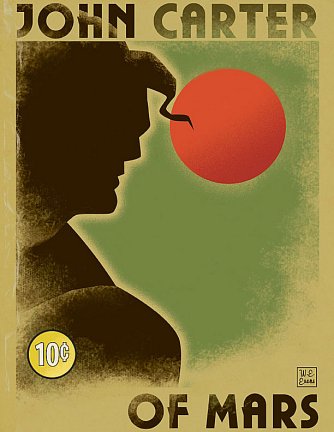
Art by Erik Evans on the Bottlerocket blog "A fun cover I did for some Pixar work on JCOM. I designed it to look like an old pulp magazine cover that John Burroughs would actually write for." |
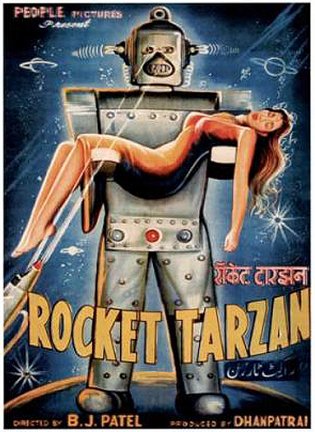
From the Robert Allen Lupton Series Unauthorized Tarzan Movies India IV: Rocket Tarzan. |
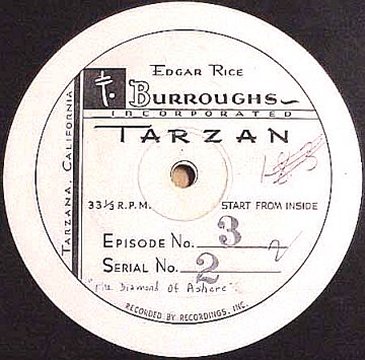
From a 16" ET radio show disc |
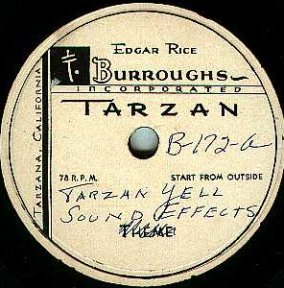
Tarzan Yell and Sound FX from a 78 disc |
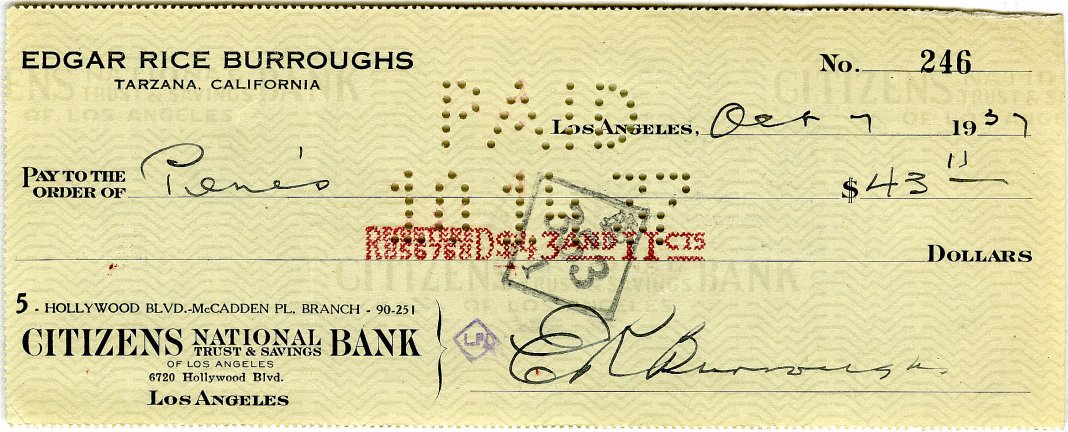
A signed check written by Edgar Rice Burroughs to
"Pene's" for the amount of $43.11 on Oct. 7th, 1937
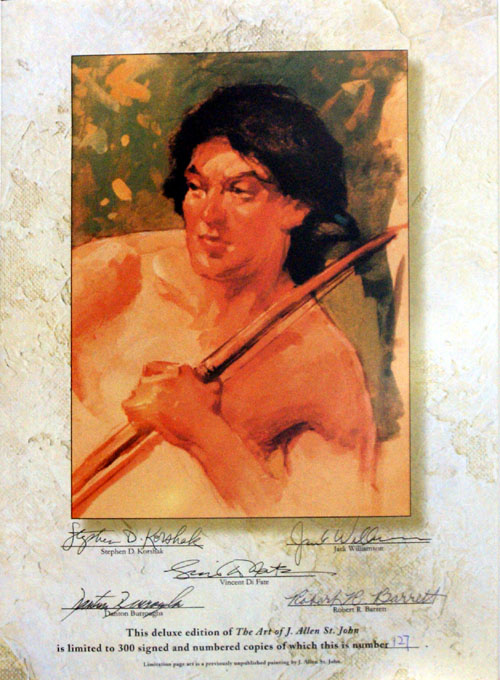
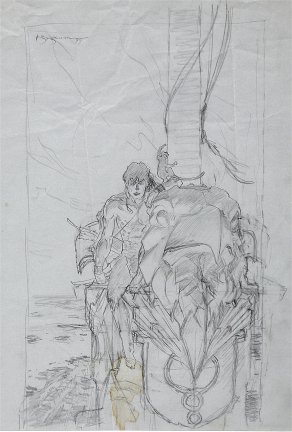
Michael W. Kaluta Tarzan Le Monstre Trade Paperback Cover Preliminary Original Art (Dark Horse, 1998). |
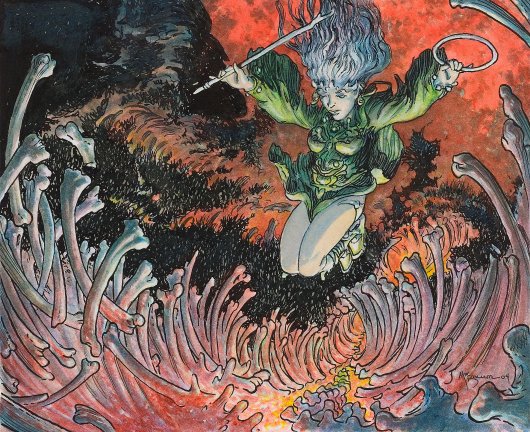
Fantasy illustration, 2004 |
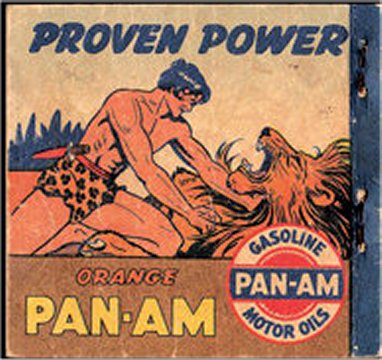
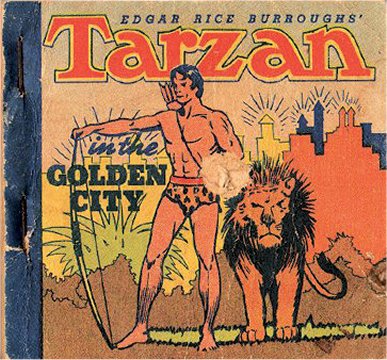
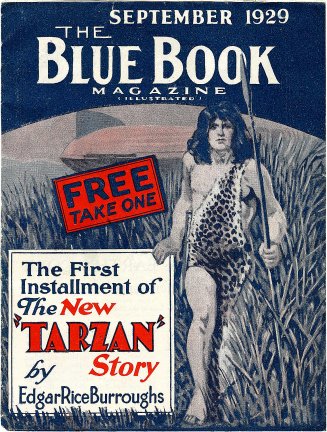
8-page premium for the first installment of Tarzan at the Earth's Core More ERB Pulp Covers |
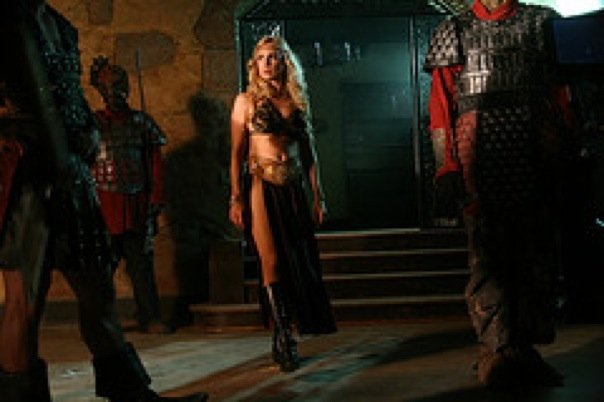
Tracy Lords as Dejah Thoris from the unauthorized John Carter film For information on the Authorized John Carter of Mars film see www.barsoom.com and www.johncarterofmars.ca/news |
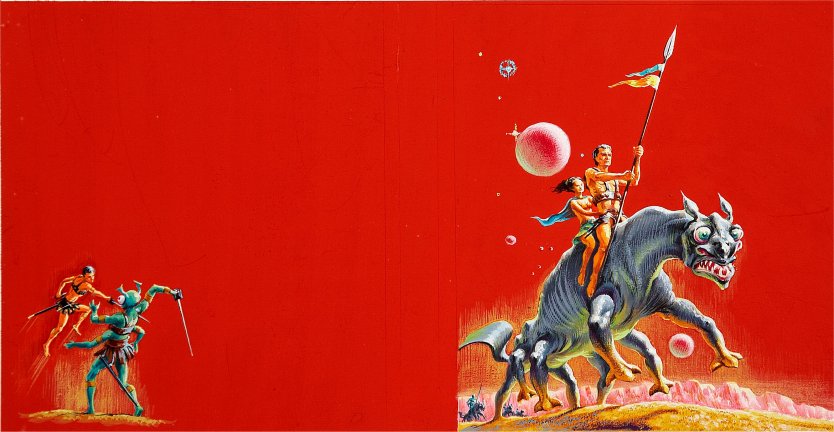
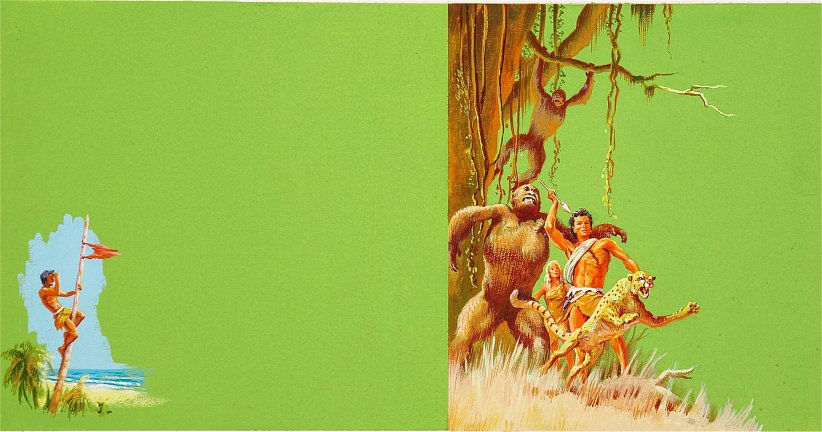




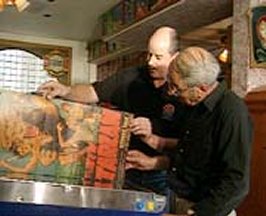
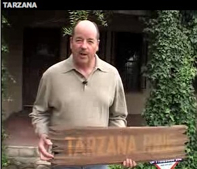 |
DANTON BURROUGHS ON THE WEB
SUR LES TRACES D'EDGAR RICE BURROUGHS Edgar Rice Burroughs ~ Photo extraite du film Documentaire de Michel Carrière ~ (1996 - 40 mn) Coproduction : La Sept ARTE, Les Films du Village, Deep Focus, Périphérie, RTBF. http://archives.arte.tv/thema/19961201/ftext/traces.html " The Michael-Angelo of the comic strip we like to call
Burne Hogarth,
Danton speaks in Tarzana http://www.erbzine.com/mag21/av/DANTON.ra |
Tarzan's Hidden Jungle
Posing as a film crew, a team of illegal hunters enters the animal sanctuary of the Sukulu tribe. Their plan: drive the elephants, rhinos and lions out of the sacred land and slaughter them for their hides. When we first meet the Ape-Man in Tarzan’s Hidden Jungle, he’s swimming in the river – a fitting introduction for Gordon Scott, the muscular new Tarzan who was discovered while working as a lifeguard at a Las Vegas resort. Zippy, a favorite on numerous ’50s TV shows, portrays Cheetah. And the sense of jungle love you may detect between Scott and co-star Vera Miles is real. They became an off-screen Mr. and Mrs.Tarzan and the Lost Safari
Mayday! Mayday! An airplane flying five high-society travelers to Cairo has flown into an enormous flock of birds and gone down somewhere in the African jungle. Fortunately, all five survive. But now they’re in dire need of food, protection and someone to lead them to safety. They need Tarzan. The second of the Tarzan movies starring powerfully built, 6’ 3” Gordon Scott is a first in the entire film series that began nearly 40 years before – the first in color. It also features striking, filmed-in-Africa cinematography.Tarzan's Fight For Life
Knowing he cannot heal his tribe’s ailing boy chief, a witch doctor steals from a jungle medical center…and mistakenly grabs a bottle of poison. The same tribal medicine man, resentful of Tarzan, hypnotizes an underling and sends him on a mission: kill Jane. It’s Tarzan’s turn for peril when he’s captured by the witch doctor’s minions: they need the heart of a lion for a tribal ceremony, but wouldn’t the heart of the Lord of the Apes be even better? Gordon Scott stars in this filmed-in-color adventure that includes the same Jane (Eve Brent) and Boy (Rickie Sorensen) from Tarzan and the Trappers. Woody Strode (Spartacus) plays the witch doctor’s henchman.Tarzan and the Trappers
Trappers intrude into the Ape-Man’s domain, poaching for profit and capturing Cheta and Boy. Other interlopers seek to plunder the riches of the lost city of Zarbo, and if that means ensnaring Tarzan in a net – so be it! Edgar Rice Burroughs’ vine-swinging Lord of the Apes (Gordon Scott) is busy in Tarzan and the Trappers and for good reason: the film is an edited version of three episodes intended for a TV series. The series never came to fruition, but fortunately for fans of Tarzan, this event-packed film did, complete with a Jane (Eve Brent) and a turn by Sherman “Scatman” Crothers as Tarzan’s friend Tyana.Tarzan's Greatest Adventure
The mighty Lord of the Apes (Gordon Scott) is determined to find the diamond hunters (including Anthony Quayle and Sean Connery) who brought terror and death to a peaceful village. But as much as Tarzan is a tracker and avenger, he’s also a protector. An irresponsible gadfly from the so-called civilized world intrudes on his quest and Tarzan knows he cannot leave her to fend for herself. Tarzan’s Greatest Adventure is widely applauded as one of the best and most grownup Tarzan films. It’s “a superior action yarn shot on location in Africa, more adult than most of its predecessors. Tarzan has a much expanded vocabulary” (Leonard Maltin’s Movie Guide).Tarzan the Magnificent
Through harsh jungle terrain, Tarzan escorts a notorious killer, intending to turn him over to authorities at Kairobi. A motley array of stranded travelers go with him. Meanwhile, the killer’s vengeful kin stalks the group, waiting for the right time to attack. Gordon Scott, in his sixth and final grab of the vine, is indeed magnificent in this dynamic color movie that maintains the mature approach and large-scale production of Scott’s prior Tarzan’s Greatest Adventure. Highlights include the powerful climactic brawl that in a sense is Tarzan vs. Tarzan, because squaring off against Scott is the actor who later played Tarzan.Available for the first time on DVD through the Warner Archive Collection, bring home these five Lex Barker Tarzan films. Featuring appearances by Hollywood legends Raymond Burr, Dorothy Dandridge, Elmo Lincoln and many more!
Lex Barker Tarzan 5 DVD Collection
WBshop.com ~ Standard Edition :: Warner Archive ~ 49.95
Tarzan's Magic Fountain
Tarzan penetrates a hidden valley reminiscent of "Lost Horizon" where no one ages -- unless they leave. An aviatrix entered the land of the fountain of youth years earlier after a plane crash, but now must return to London to free her fiancee from a prison sentence. The original Tarzan, Elmo Lincoln, has a cameo.Tarzan and the Slave Girl
A tribe of lion-worshippers called the Lionians seek to repopulate its numbers by kidnapping women as slave-brides. Among those kidnapped: Tarzan’s Jane (Vanessa Brown, "The Ghost and Mrs. Muir"), making Tarzan an easy target for the alluring Denise Darcel ("Vera Cruz").Tarzan's Peril
The arrival of gunrunners in the jungle can mean only one thing for Tarzan: trouble, and plenty of it! Armed with rifles acquired in exchange for gems, the warlike Yorongan people overwhelm the proud, peaceful Ashuba tribe and its beloved queen (Dorothy Dandridge). The loin-clothed Lord of the Apes plunges into action to restore order in an adventure that has him swooping from tree to tree; plunging over a waterfall; confronting a giant, flesh-eating plant; liberating captives and taking on the Yorongan king in a knife-edged death match. Lex Barker portrays the legendary Ape-Man (the star’s third of five vine-swinging roles) in this matinee rouser that, rare for the series, includes scenes shot on location in Africa.Tarzan's Savage Fury
English bwanas wind their way through uncharted territory toward the homeland of the hostile Wazuri. There, they hope to lay hands on diamonds they say are needed for Britain’s armaments. But the entire safari is a ruse. Its leaders are jewel thieves who’ve duped Tarzan into being their guide. The Ape-Man has a fierce fight on his hands in this fourth Tarzan film starring Lex Barker.Tarzan and the She-Devil
Emmy-winner Raymond Burr ("Ironside," "Perry Mason") co-stars with Monique Van Vooren ("Ash Wednesday," "Andy Warhol's Frankenstein"), the beautiful captain of a band of ivory thieves who enslaves a warrior tribe, leading them into territory teeming with huge elephants. Lex Barker's last appearance as Tarzan.For more on all the ERB films see
ERBzine Silver Screen
Phil Collins and Sons Celebrate Tarzan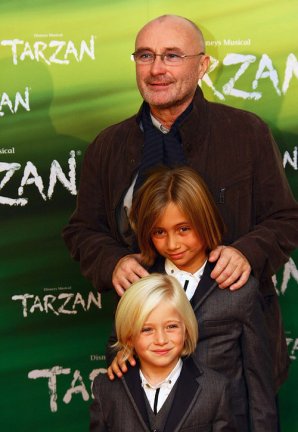
Phil Collins and his two sons - Nicholas and Matthew - attended the Birthday gala of Walt Disney's musical Tarzan in Hamburg, Germany on October 19, 2009. The boys' mother is Phil's third ex-wife, Orianne Cevey.Collins contributed 11 songs and instrumental pieces, and was deeply involved in the Broadway production of Tarzan. Unlike the movie, where Collins sang all the material, the characters sang on stage.
The 58-year-old You'll Be In My Heart singer also has a son Simon and a daughter Joely with his first ex-wife, Andrea Bertorelli. He is also dad to Lily with his second wife Jill Taverman.
The former singer and drummer for Genesis told a German newspaper that since he had surgery in April to repair a dislocated vertebra in his neck, he doesn't have feeling in his fingers and isn't able to pick up his sticks.
The 58-year-old musician was quoted by Hamburger Abendblatt on Monday as saying the only way he could drum is if he were to "glue drumsticks to my hands." But that's not stopped his recording aspirations. He told the newspaper he plans a new CD that will feature covers of 30 songs from the Motown label in 2010. "I want the songs to sound exactly like the originals," the paper quoted him as saying.
See the ERBzine coverage of the 2008 Tarzan Premiere in Hamburg.
http://www.erbzine.com/germany
also the NYC Broadway Tarzan Premiere
http://www.erbzine.com/disney
and
the Netherlands Tarzan Premiere
http://www.erbzine.com/holland
Phillips Academy, better known as Andover, is a coeducational, non-profit, independent high school of 1,096 students, known for its extensive and rigorous academic program. It was founded in 1778, and notable Andover alumni include New England Patriots head coach Bill Belichick; 19th-century poet Oliver Wendell Holmes; Presidents George H. W. Bush and George W. Bush, former Yale president and commissioner of Major League Baseball A. Bartlett Giamatti; MacArthur Fellow Peter Sellars, landscape architect Frederick Law Olmsted; inventor Samuel F. B. Morse, artists Frank Stella, Joseph Cornell, and George C. Tooker, authors Edgar Rice Burroughs, Julia Alvarez, and Tracy Kidder, actors Humphrey Bogart, Jack Lemmon, James Spader, and Dana Delany, author and physician Dr. Benjamin M. Spock, and John F. Kennedy Jr.
ERB AND PHILLIPS ACADEMY
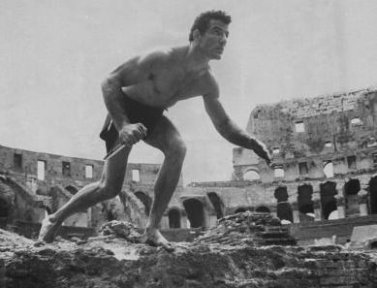
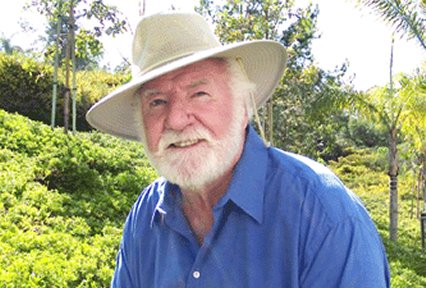
News Story from Claycord.com
Don "Tarzan" Bragg, who won an Olympic Gold Medal in the 1960 Olympics in Rome, is selling his piece of American history. Bragg, who also played the role of "Tarzan" in "Tarzan and the Jewel of Opar" had a stroke back in June, and needs the money to pay his medical bills and other living expenses. His medal is for sale on craigslist for $20,000. Don Bragg has had an impressive life. He won the gold medal for the men's pole vault event at the 1960 Summer Olympics, held in Rome, Italy. He still holds the World record for the event, which he set during the trials before the '60 Olympics. After the Olympics, Bragg played the role of "Tarzan" in "Tarzan and the Jewels of Opar", but the movie was never released due to litigation. Also, Bragg recently released a book called "Kamp Olympik", it's a book about a camp he started in 1967 to help inner city children experience the outdoors, and learn a lot in the process.
Appeal from Don Bragg's Granddaughter
My grandfather, "Don 'Tarzan" Bragg had a stroke and heart attack Sunday while visiting our family in LA. He is hospitalized out there and is in stable but obviously serious condition. It's going to take a long time to get him back on his feet. He still has no feeling in his left side and his blood pressure is through the roof.
Don Bragg item on Craigslist.org
This is not a joke. I am selling my 1960 Olympic gold medal with the original frame. I'm taking reasonable offers. I will not go under 20,000 so please do not send offers under that amount. I've hit some pretty bad financial situations due to my recent stroke. I will meet in person to deliver the medal along with a copy of my most recent books. If you have any questions feel free to ask. Also if you "Google” my name Donald Bragg, Don Tarzan Bragg, or Bragg you will see the world records I hold and other various accomplishments.
Excerpts from a recent article
Bragg was the last of the great pole vaulters to use a aluminum pole. From 1954 until 1960, he was always world ranked and capped a brilliant career in 1960 by setting a world record of 15' 9¼" (4.80 m) at the Olympic Trials and winning an Olympic gold medal with a vault of 15' 5" (4.70 m). He set a world indoor record of 15' 9½" (4.81 m) at Philadelphia in 1959 and, like Hall of Famer Cornelius Warmerdam, vaulted better indoors than outdoors.At 6' 3" and 197 pounds, Bragg was one of the largest vaulters in history. He had to stay on a 1200 calorie diet to stay at that weight. Any more and the aluminum alloy poles would crumple under the strain. The aluminum pole had another disadvantage: while taking it aboard a train in Philadelphia, Bragg hit an electrical line and nearly electrocuted himself.
While at Villanova University, he won the NCAA pole vault championship in 1955 and was the IC4A champion, both indoors and outdoors, from 1955 to 1957. He also tied for the AAU indoor championship. After graduating in 1957, Bragg again tied for the AAU indoor championship in 1958, then won the event from 1959 through 1961. He was also the AAU outdoor champion in 1959.
Nicknamed "Tarzan" because of his size and strength, Bragg's goal was to play that role in the movies. Few have so actively pursued a role. He toured Europe and Africa for the U.S. State Department as a goodwill ambassador, climbing trees and swinging from vines.[4] He met Johnny Weissmüller who agreed that Bragg would be perfect as Tarzan. When he won the Gold at the 1960 Olympics he did the infamous Tarzan yell from the podium, shocking the crowd. He was offered the role twice, but was injured and missed both opportunities. His dream was unfulfilled.
He later became athletic director at Stockton State College (N.J.), the owner of a summer camp, and the author of A Chance to Dare: The Don Bragg Story. His time running a summer camp is chronicled in Kamp Olympik by Don and Theresa Bragg as told to Patricia Doherty.
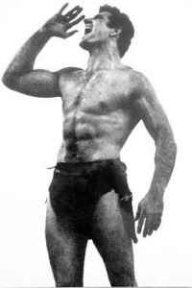 |
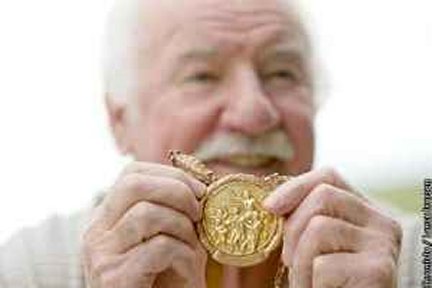 |
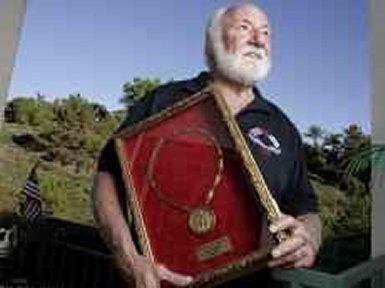 |
Golden reunion for Don Bragg in Rome
Clayton Pioneer ~ October 04, 2010Clayton resident Don Bragg became famous as a champion pole vaulter with a “Tarzan” yell and persona. In Rome for the 50th anniversary of the opening of the 1960 Summer Olympics, he was given the honor of making a speech representing the athletes of the world who competed 50 years ago. Bragg, the Rome Olympics pole vault gold medalist, culminated his speech with his trademark Tarzan yell. It was greeted by a standing ovation from more than 5,000 people in the Rome city hall square, Palazzo Senatorio, surrounded by Michelangelo sculptures.
During the 1960 Summer Olympics, the United States and Soviet Union were competing in athletics at the height of the Cold War, which thankfully never got quite as heated as the battles on the sports fields. Even though the 1960 U.S. team included such legendary figures as basketball’s Jerry West and Oscar Robertson, decathlete Rafer Johnson, boxer Cassius Clay (Muhammad Ali), sprinter Wilma Rudolph and discus thrower Al Oerter – all winning gold medals – the USA finished well behind the Soviet Union for gold medals and total medals.
Due to a conflict with a Rome Olympics reunion event planned by the U.S. Olympic Committee for the same time in Tennessee, Bragg was the only American athlete this August in Rome. He was treated as a returning hero and celebrity. “I was a rock star,” reports the never bashful 75-year-old.
Returning home to sweetheart.
When Bragg traveled to Rome with the American track and field team 50 years ago, he went “to compete against the best in the world” and didn’t want “any distractions” – which meant sweetheart Theresa Fiore stayed home in New Jersey. “We dated for seven years, but he always told me: ‘I won’t put gold on your finger until they put gold around my neck,’ ’’ Theresa Bragg says today from the Clayton home they share with daughters Renee and Tracey and four grandkids.Bragg won the Olympic gold medal on Sept. 7, 1960. Days later, Theresa read a newspaper article which quoted him saying he was headed home to marry his sweetheart. They wed two months after the Rome Olympics and left for California, where he hoped to play Tarzan in the movies like his hero Johnny Weissmuller, another Olympic champion. Sadly, that dream never materialized. In that era, all Olympic athletes were amateurs so Bragg retired from the sport one year after the Olympics. “I dabbled in a number of businesses but found recreation to be my calling,” he explained.
He served as special assistant for youth affairs and recreation to New Jersey Gov. Richard Hughes. Don and Theresa Bragg ran Kamp Olympik for boys each summer in southern New Jersey. The camp hosted 300 boys a week for nine weeks in the summer. “Many of the kids came from tough ghettos, but we gave them a great experience,” Bragg says. “We still get notes from many of them. In fact, we got a message this week on Facebook from one who is now mentoring boys himself.”
The Braggs lost their home in Clayton in 2004 in a devastating fire that also destroyed much of their memorabilia, although a fireman retrieved the Olympic gold medal from the smoke-filled house. They moved to Southern California where they lived in a senior community until Don suffered a stroke on Father’s Day 2009. They moved back to Clayton to be around family as he continued his rehab. These days, Bragg can be found in Clayton working out at Snap Fitness several days a week.
Friends step up to make trip possible.
The invitations for both the U.S. Olympic Committee and Rome Olympic reunions didn’t make their way to the Braggs until mid-July. They weren’t in a position to pay the more than $5,000 in airfare to go to Rome. But a “dear friend” told them, “You’re not going to miss this. You’ve done so much good with your camp that we want to sponsor you.” The friends paid the tab and the Braggs were off for a two-week trip to Italy.They spent four unforgettable days in the Italian capital. Rome is in the running to host the 2020 Olympic Games, so the country went all out to make the world’s athletes welcome. More than 25 nations were represented. The reunion’s Opening Ceremonies, 50 years to the day after the Rome Olympics began on Aug. 25, 1960, were held at City Hall, formerly a castle, with an outdoor stage in front of a giant video screen. The ceremony opened with speeches by local dignitaries followed by then Italian gold medal boxer Giovanni Benvenuti’s greeting to all the athletes. The, Bragg took the podium.
The Braggs had provided Don’s five-minute speech in advance so that translators could prepare for it. Each athlete was given a headset so they could get a translation of the speeches. Bragg, speaking for all the athletes who competed in 1960, brought many to tears as he declared, “We want to bring the games back to the Eternal City, ” and called Rome his “second home.”
He spoke of the thrill of having the gold medal around his neck and hearing his national anthem. “In that moment, so many emotions flow through your body … You want to cry, laugh and yell, so I expressed myself in my own crazy way … For after all, that was and is our moment in time,” Bragg said. He then let out his signature Tarzan yell one more time, just as he’d done on the medal stand a half century before. Many in the audience answered back with their own yells. “I had to wait for things to calm down before I left the stage,” he reports. “The whole experience was beyond words. It was almost like Hollywood with all the lights, cameras, excitement,” Theresa Bragg says.
Athlete’s unlikely beginnings.
As a young boy growing up in New Jersey across the river from Delaware, Don loved Tarzan movies starring Weissmuller. He would swing on ropes from trees imitating his screen idol. One day, he picked up a bamboo pole behind a furniture store and thus began his vaulting career.By the time he was a high school senior, the school was able to raise enough money to buy him an aluminum pole, as bamboo poles were becoming outmoded. He increased his best leap by two feet, earning a scholarship to Villanova University near Philadelphia. He became an elite pole vaulter who figured to make the 1956 Olympic team before injuring himself at the collegiate championships. He vaulted through college and then entered the U.S. Army while continuing to compete internationally. “I traveled to Scandinavia, throughout Europe, the Middle East and Africa,” he recalls.
In 1959, he set the indoor world record in the pole vault. “As I entered the arena in Philadelphia, someone told me it was Friday the 13th, which was bad luck. I told him, ‘Yeah, bad luck for everyone else,’ ’’ Bragg says while explaining with a twinkle in his eye that he was always “very humble.”
At the 1960 U.S. Olympic Trials at Stanford, the 25-year-old Bragg set an outdoor world record of 4.8 meters (15 feet, 9 inches) and he was off to Rome as the gold medal favorite. In a grueling six-hour long Olympic final on Sept. 7, Bragg won gold with a best leap of 4.7 meters (15-5). American teammate Ronnie Morris was second and Finnish vaulter Eeles Landstrom third. Landstrom was at the Rome reunion and the former rivals shared a heartwarming embrace. “We hadn’t seen each other since we got off the medal stand, but we were still in competition – comparing the many ailments we’ve had over the years. Both of us have had a stroke and heart bypass,” Bragg says, adding that Morris also had a stroke. Another old friend Bragg saw in Rome was Ron Delany, a roommate at Villanova and 1956 Olympic gold medalist for Ireland in the 1500 meters.
The day after the ceremony, the Braggs headed out on their own to the Stadio Olimpico where the track and field events were held. A large contingent of media was there for another story, but when the press found out Bragg was on hand he was mobbed and ended up on the front page of Italian newspapers the next day. He also cut the ribbon at the grand opening of the new Olympic Museum in Rome. After four days, the “rock star” and his wife became just regular tourists, sightseeing and visiting the birthplace village of Theresa’s father.
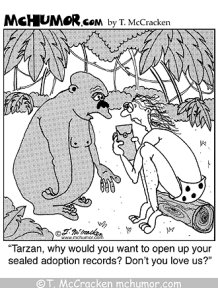
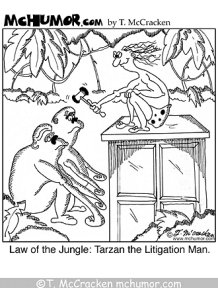

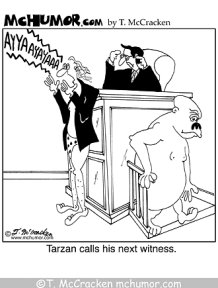
From ERBzine.com News
Willem Dafoe Discusses John Carter of Mars & His Tars Tarks Character
October 21, 2009
Willem Dafoe who is slated to play Tars Tarkas in Disney's John Carter of Mars recently spoke to the AICN, about his role in John Carter and revealed, that his character has four arms and is 9 foot tall.I’ve seen a lot of the designs and things, and I’ve just started to do prep work now… [I've] starting doing scans and things like that, but it’s going to be a real full-on… Well, I’m nine feet tall with four arms, but, just from the scheduling, I’m going to do the stuff.
They’ll use my face, but they’ll enhance it in a way–both after and before–in a way that I may not be recognizable. But, I'm good with that. It’s particularly cool, because he's a creature, but he's got this huge range of character. And, he does cool things in the movies.
There's a whole period where we're going to work with the language and the movement, and find out how I'm going to be nine feet tall, and all that stuff… like, a long period of time where we're going to go to Thark school. We're going to create our culture. So, it's going to be very cool. These guys know how to do this, and they've got great people. And, the designs and things are just mind-blowing.

![]()
BILL
HILLMAN: Editor and Webmaster
BIL
L AND SUE-ON HILLMAN ECLECTIC STUDIO
ERB
Text, ERB Images and Tarzan® are ©Edgar Rice Burroughs, Inc.-
All Rights Reserved.
All
Original Work ©1996-2009/2019 by Bill Hillman and/or Contributing
Authors/Owners
No
part of this web site may be reproduced without permission from the respective
owners.